Genre: Action Developer: Electronic Arts Publisher: Electronic Arts Players: 1 Released: 1992
Back in the classic 16-bit days when the Sega Genesis was fighting against the Super Nintendo for popularity, a classic series (the Strike one) was born. My dad bought me Desert Strike for Christmas several years ago and at first glance (before I played it), I was a little disappointed because I didn’t think I would like this kind of game. I was more wrong than I thought I could’ve been.
A minor war has broken out in the overheated desert and it’s up to you to keep the area’s status at a minor war instead of letting it wake up even more and turning into World War III. Before you do that, you need to decide on a couple of the game’s settings. The copilot is responsible for a few things such as aiming the guns onboard the helicopter during action. If you want to, you can change your copilot before you begin. The last option gives you the chance to change the controls, as in which of the three buttons controls which kind of weapon, and how your helicopter is controlled.
Before each level begins, the commander in charge will give you a brief story of what’s going on and an overview of your mission objectives for the level you’re about to bravely challenge. You can perform your missions in any order you want, but it’s best (and easier) to do them in order.
At the start of each level, the helicopter you have the honor of controlling will be sitting on a frigate in the ocean. You have to fly over the crystal blue ocean to the sandy land to make the action begin. Each of the four levels takes place in the desert, but they’re not all the same. The territories in each of the four not so deserted deserts are different, and they get more full of enemies and complicated as you go along. There are many different kinds of enemies in each level. There are men loaded with guns, bazooka-wielding men, enemy choppers, speedboats, various kinds of tanks, and other powerful, ground-residing nightmares.
Your helicopter (it’s called the Apache) can only use three different weapons, but they’re all you’ll ever need. These three weapons are the chain gun, hydra, and hellfire. Each of the enemies in the game have a certain amount of armor (how much damage they can take before they’re annihilated), and they all inflict certain amounts of damage when any of their projectiles come in contact with the Apache. The Apache (that’s you!) carries 600 points of armor. Your three weapons’ points of damage are as follows: chain gun: three points, hydra: 25 points, and hellfire: 100 points. For instance, each hydra you shoot will inflict 25 points of damage on whatever it hits. For another example, the VDA tanks have a total armor of 100 points. That means it would take four of your hydras or just one hellfire to destroy this evil nemesis. But enemies aren’t the only things that you have to spray with bullets and/or blast apart. Depending on either the missions, or your personal choice, you can shoot other things such as buildings, jeeps, villages, towers, flags, and much more.
Each of the four levels have their own set of objectives that must be fulfilled in order to successfully complete the level, or campaign. You’ll be responsible for completing such duties as rescuing MIAs (missing in actions), destroying power stations, rescuing pilots lost at sea, putting a stop to scud launchers, and the list goes on and on for a few miles. Once you complete an objective, a message usually pops up onto the screen to act as a pat on the back.
To find out anything you need to know about your status while you’re playing a level, all you have to do is pause the game. Unlike most video games in which the word ‘Pause’ just pops up to trespass on the TV screen’s property, when you pause Desert Strike, a map showing the entire current level, along with all the important stats of the Apache, comes up. You can choose to press B to read about your mission duties, to read a description of the enemies, and more. Press C if you want to see a page that lists your current mission status, which tells you whether or not your jobs are done. Even with all of these great statistics that are available for viewing, you’ll need to be looking at the map the majority of the time. The map tells you how many of each kind of weapon you have left, how much fuel is swishing around in the tank, your current armor supply, how many people you’ve picked up, how many lives you have left, and your current score. But that’s not the big deal about the map. By viewing and utilizing the main map of the level in the center of this paused screen, you can find out where most of the enemies are, and where all of the (except for the few hidden ones) fuel drums, ammo crates, MIAs, landing sites, and major places that have something to do with your mission, are located. Pretty much, you’ll need to frequently pause the game while you play the game in order to find out how you’re doing, where you need to go, and so on.
As you probably figured, there are many items you can pick up and use in each level. There are fuel crates, ammo crates, armor repairs, an item that makes your ladder go up and down faster, and the very hard to find extra lives. To pick up an item, you just have to fly over and come to a halt right above any item. A ladder automatically drops down from your helicopter to steal the ground-ridden prize. You can also pick up people, whether it’s an MIA, a prisoner, or even an enemy on the run. The helicopter can hold up to six extra passengers at a time. At any time, you can head over to a landing zone (represented by a white X on the ground) in order to drop the people off.
For the time (1992), Desert Strike has some unbelievable graphics. The various enemies, your helicopter, the frigate, and other vehicles, all look nice and detailed. The levels themselves look just like a desert should (brown, flat, and arid). But what I liked the best about Desert Strike in the graphics department is its short cinemas. Whenever you do certain things in the game or when you complete a level, a short cinema will play on the screen for your viewing pleasure. These cinemas are very colorful and without a doubt, they’re some of the best graphics I’ve ever seen in a 16-bit game. You’ll even see some great graphics as soon as you turn the game on because even the title screen has impressive visuals.
The sounds are just as they should be. The sound effects of the missiles flying through the air, a bullet or other weapon making contact with something, and the explosions, all sound sort of realistic for this to be a 16-bit title. The music is very loud and it has a fast beat to it; and it’s not bad either. Luckily though, for concentration’s sake, no music plays while you’re actually playing the game; it just plays during the mission briefings and at the various title and option screens.
The only reason I didn’t give Desert Strike a perfect 10 is because in certain parts of the third and fourth levels, there are too many enemies in one place, making it almost impossible to get past those areas unless you have tons of lives on hand. Unfortunately, you can’t change the difficulty settings, but it does give you a timeless password after each level completion. Other than that, this game is really close to being flawless in my opinion.
Don’t let the fact that Desert Strike only has four levels scare you off. All four of the levels are huge, and they have several challenging and fun objectives to complete. Even if you’re not super crazy about games in which you control an aircraft or games about war, give Desert Strike a chance. I didn’t think I would like the game one bit at first, but it turned out to be one of my favorites.
SCORE: 8 out of 10


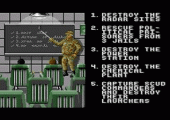
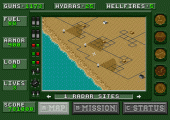
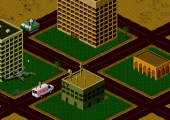
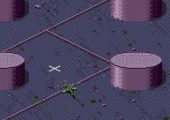
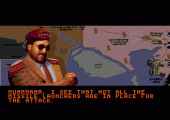
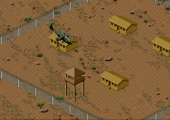
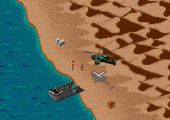
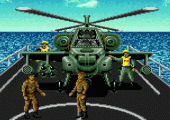
Recent Comments